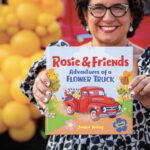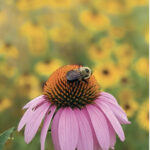 As we’re coming out of the pandemic, you may be aware of social changes in yourself. Dogs have similar social needs, with adverse effects if those needs aren’t met appropriately and often enough.
As we’re coming out of the pandemic, you may be aware of social changes in yourself. Dogs have similar social needs, with adverse effects if those needs aren’t met appropriately and often enough.
“Without proper socialization, dogs may become anxious and fearful of anything unfamiliar,” said Amy Powell, certified dog trainer and owner of DoggieU, LLC.
Just as we learn from socializing, “dogs learn skills they need: communication, hunting, and how to play cooperatively with other dogs,” she said.
Much like when we started looking disheveled, wearing pajamas in public because no one would recognize us under our masks, dogs forget their good manners without routine interactions. They need to keep socializing with humans, cats and other dogs to ensure they don’t develop bad behaviors.
Socializing also helps dogs make friends, derive good mental health, confidence and self-esteem. And it helps them feel more comfortable in unfamiliar situations, like meeting new people and going to new places. Dogs, Powell said, are all in different stages of their journeys.
“Don’t assume that approaching a dog is OK,” she said. “Some dogs aren’t friendly.”
Where to Socialize
It helps to meet on neutral territory.
Walking your dog in public spaces will help the pup be more comfortable. Try taking your dog to a training class, a structured dog walk, or a popular public trail. Expose your dog to a variety of stimuli, people, clothing, different ways of being petted or handled, environments, floor textures, surroundings, cats and other dogs. Brick-and-mortar pet supply stores are fun mingling spots, and so are well-supervised and curbed dog parks. Ask your vet for recommendations for doggie play dates, trainers and other social resources.
Preparing to Socialize
Before embarking on socializing, level-set your expectations. Just as people don’t like or gel with all people, not all dogs will mesh personalities either. Senior dogs sometimes clash with much younger dogs. Males tend to be competitive when brought together. Females together tend to become territorial and fight with each other.
One of your objectives in socializing your dog is to make the presence of other dogs a normal thing. Nothing to see here, pup, and nothing to get excited over. Move along.
How to Socialize
Be sure your dog is calm and acting politely. You’ll want to keep your body language calm and assertive, but be on guard in case you need to withdraw your dog. Your dog will take cues from your demeanor and follow your lead.
- When you see another dog owner with their dog on a leash, ask the owner, “Can we say ‘hello?’”
- If the answer is no, respect that and move on. If the answer is yes, instruct your dog, “Say hello.”
- Allow the dogs to sniff each other, just for a few seconds.
- Before leashes get tangled, tell your dog, “Leave it. Let’s go.”
- Lead your dog away from the other dog.
- If your dog showed good manners, give lots of praise and a treat. If things went awry, don’t praise, and don’t yell either. When you try again, you don’t want your dog to have a negative association with socializing. Praise the behavior you want repeated and withhold praise for the behavior you don’t.
If the first meet-and-greet didn’t go well, don’t be discouraged. Much like people coming out of their solo hovels, we’re all a little worse for the wear, and we’re all re-learning some social skills. But unlike us, dogs don’t mask or fake their feelings in social situations.
You will want to repeat introductions with many dogs to build positive associations.
“Let the dogs work out their own issues for the five seconds they’re together,” Powell said. “If they seem to like each other, you can let them play longer next time.”
If either dog shows negative body language, such as a snarly lip, bared teeth, low growl, fixed gaze or hackles going up, then at least the interaction was short. When a dog lies on his back without wagging his tail, it doesn’t mean he wants a belly rub. It means, “Back off!”
“Displays of aggression have underlying emotions of fear or anxiety. It’s an attempt for the dog to gain control of the situation,” Powell said. “Aggression and anxiety are common when dogs haven’t been around other dogs enough.”
If your dog has known issues, try socializing with just one dog and repeat the above process frequently. As interactions improve, you can gradually increase the time they spend together.
“Ideally, you will want to socialize your dog at least twice per week, and more often than that, if possible,” Powell said. “Make socialization part of your dog’s routine.”
As a general rule, socializing is for all adult dogs, with one exception. In rare cases, you may have a dog who is dominant aggressive. According to Powell, this type of dog is disinterested in social exchanges, is only interested in overpowering, and has no willingness to please. An animal behaviorist would need to formally diagnose this personality type.
For puppies, it is only safe to socialize when they receive their second kennel cough vaccine shot (sound familiar?) from their veterinarians.
For all other dogs, routine socialization builds and maintains a good temperament. Once your dog reaches the point of being consistently calm and comfortable around people, other dogs, and even cats, then your dog is well socialized. You can expect your dog to react to stimuli in a healthy, appropriate way. And because your dog is taking your cues, so will you.
For more information, visit www.doggieullc.net.
If you like what we do, please support our work. Become a Friend of TheBurg!





